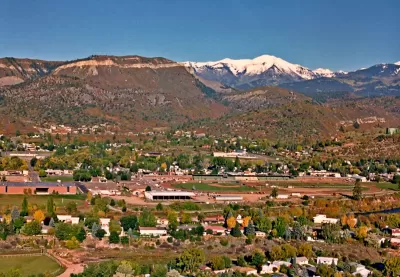Experts warn that more intense fires fueled by a warming climate are threatening an increasing number of Colorado's suburban communities.

The destructive firestorm that raged through Colorado last month, along with other major fires in the last few years, highlighted the need for added fire protection, known as "hardening," in all of Colorado's suburbs, say fire scientists and officials.
According to an article by Bruce Finley, researchers point to both climate change and the encroachment of flammable homes in fire-prone areas as factors driving more devastating fires and longer fire seasons. Rising temperatures and dry grass that would normally be buried under snow have been fueling fast-moving fires, forcing thousands of residents to evacuate and destroying more than 1,000 homes last year. Meanwhile, record high winds complicate firefighting efforts, sometimes grounding aircraft and rendering traditional tactics ineffective.
Officials and researchers are scrambling to understand how to prepare for the future and facilitate safe and speedy evacuations. With fires threatening "much wider areas than previously understood," land use will play an increasingly important role in protecting communities that were previously presumed safe.
The Colorado Fire Commission, made up of public safety officials, firefighters, law enforcement, and others, are working on a set of recommendations that could include changes in building codes to mandate non-flammable materials, zoning changes to limit construction in fire zones, and prescribed fires.
FULL STORY: Marshall firestorm shows Colorado suburbs now vulnerable as climate warms, “hardening” needed, experts say

Alabama: Trump Terminates Settlements for Black Communities Harmed By Raw Sewage
Trump deemed the landmark civil rights agreement “illegal DEI and environmental justice policy.”

Planetizen Federal Action Tracker
A weekly monitor of how Trump’s orders and actions are impacting planners and planning in America.

The 120 Year Old Tiny Home Villages That Sheltered San Francisco’s Earthquake Refugees
More than a century ago, San Francisco mobilized to house thousands of residents displaced by the 1906 earthquake. Could their strategy offer a model for the present?

In Both Crashes and Crime, Public Transportation is Far Safer than Driving
Contrary to popular assumptions, public transportation has far lower crash and crime rates than automobile travel. For safer communities, improve and encourage transit travel.

Report: Zoning Reforms Should Complement Nashville’s Ambitious Transit Plan
Without reform, restrictive zoning codes will limit the impact of the city’s planned transit expansion and could exclude some of the residents who depend on transit the most.

Judge Orders Release of Frozen IRA, IIJA Funding
The decision is a victory for environmental groups who charged that freezing funds for critical infrastructure and disaster response programs caused “real and irreparable harm” to communities.
Urban Design for Planners 1: Software Tools
This six-course series explores essential urban design concepts using open source software and equips planners with the tools they need to participate fully in the urban design process.
Planning for Universal Design
Learn the tools for implementing Universal Design in planning regulations.
Clanton & Associates, Inc.
Jessamine County Fiscal Court
Institute for Housing and Urban Development Studies (IHS)
City of Grandview
Harvard GSD Executive Education
Toledo-Lucas County Plan Commissions
Salt Lake City
NYU Wagner Graduate School of Public Service




























